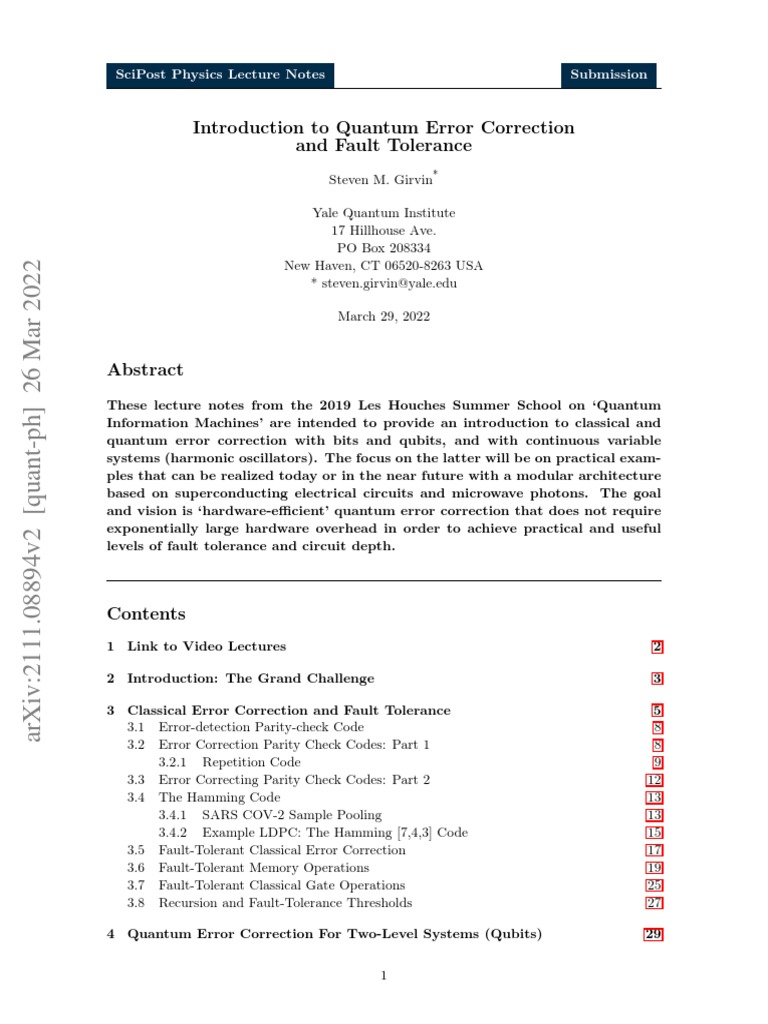Quantum error correction (QEC) represents a transformative paradigm in the field of quantum computing, addressing one of the most monumental challenges faced by researchers and technologists: the vulnerability of quantum information to decoherence and operational errors. While classical error correction codes serve the digital realm effectively, the nuanced behavior of quantum bits (qubits) introduces an entirely different specter of challenges that must be meticulously navigated. This discourse endeavors to elucidate the foundational concepts of quantum error correction, its significance within quantum computation, and the burgeoning possibilities that QEC heralds for the future of technology.
At its core, quantum error correction is predicated on the understanding that quantum information is inherently fragile. Qubits, the basic unit of quantum information, are susceptible to a range of perturbations and disturbances from the environment. These can manifest as decoherence, where the qubit loses its quantum properties, or as operational noise, where the control mechanisms intended to manipulate qubits falter. Classical error correction employs redundancy—repeating data across multiple bits—to safeguard against such issues. In the quantum domain, however, the principles diverge dramatically due to the principle of superposition and the no-cloning theorem, which asserts that copying an arbitrary unknown quantum state is impossible.
To counter these hindrances, quantum error correction codes utilize a combination of entanglement, superposition, and fault tolerance. One of the seminal achievements in this domain is the Shor code, which encodes a single logical qubit into a larger ensemble of physical qubits. Specifically, Shor’s code employs nine physical qubits to protect one logical qubit, introducing a structure that can detect and correct errors without directly measuring the qubit’s state—a capability crucial because direct measurement would collapse its superposition state.
The architecture of quantum error correction is multifaceted, encompassing various schemes such as the Surface Code, Steane Code, and Bacon-Shor Code. The Surface Code, in particular, emerges as a frontrunner, lauded for its practicality in experimental implementations. Its topology allows for local interactions, utilizing error syndromes that can be optimized for scalable quantum computing architectures. The promise of more robust quantum circuits is tantalizing, as the realization of high-fidelity qubit operations hinges significantly on the successful implementation of these coding mechanisms.
However, the application of quantum error correction extends beyond mere error mitigation. Entangled states facilitate the creation of logical qubits that are immune to localized errors. This poses a paradigm shift in how we conceptualize information processing; rather than perceiving information as a linear cascade of bits, QEC asserts that information can exist in collective states with defined resilience against disruptions. Thus, the field of quantum computing pivots from a vulnerability model to one that embraces a proactive, preventative approach.
As researchers delve deeper into quantum error correction, it becomes apparent that its implications reverberate through numerous sectors. One primary focus is the enhancement of quantum algorithms that underpin practices ranging from cryptography to materials science, where quantum simulations permit unprecedented insights into complex systems. For instance, algorithms designed for drug discovery can dramatically benefit from QEC by enabling stable simulations of molecular interactions, a task fraught with computational challenges in classical realms.
Moreover, the pursuit of strong quantum error correction is pivotal in achieving quantum advantage—a benchmark where quantum computations outperform the most powerful classical counterparts. This potential boosts not only academic interest but also commercial investment, as industries recognize that the viability of quantum technologies hinges on the mitigation of noise and errors. One of the flagship applications identified is the enhancement of machine learning algorithms, where QEC can improve the accuracy and efficiency of quantum neural networks.
Nevertheless, the journey towards robust error correction is not without its complexities. Implementing QEC on current quantum hardware presents substantial obstacles, including qubit fidelity, connectivity, and the overhead introduced by the additional qubits required for error correction. As a result, the field is in a state of dynamic evolution, with active research aimed at refining both the theoretical frameworks and practical applications of quantum error correction protocols.
As we gaze towards the horizon, the potential of quantum error correction inspires a shift in our understanding of what computing may become. Rather than simply aiming for more powerful classical systems, the infusion of QEC into quantum architectures heralds a new era where error resilience becomes paramount. The intertwining of physics, computer science, and engineering within this domain exemplifies the type of interdisciplinary collaboration necessary to unlock the true potential of quantum computations.
In conclusion, quantum error correction is not merely a technical feature; it encapsulates a revolutionary perspective that reshapes how we conceive of information processing in the quantum realm. As the landscape of quantum technology continues to evolve, the exploration of QEC will be central to harnessing the full power of quantum computation, driving innovations across disciplines and catalyzing a wave of advancements that redefine the very essence of computation.












